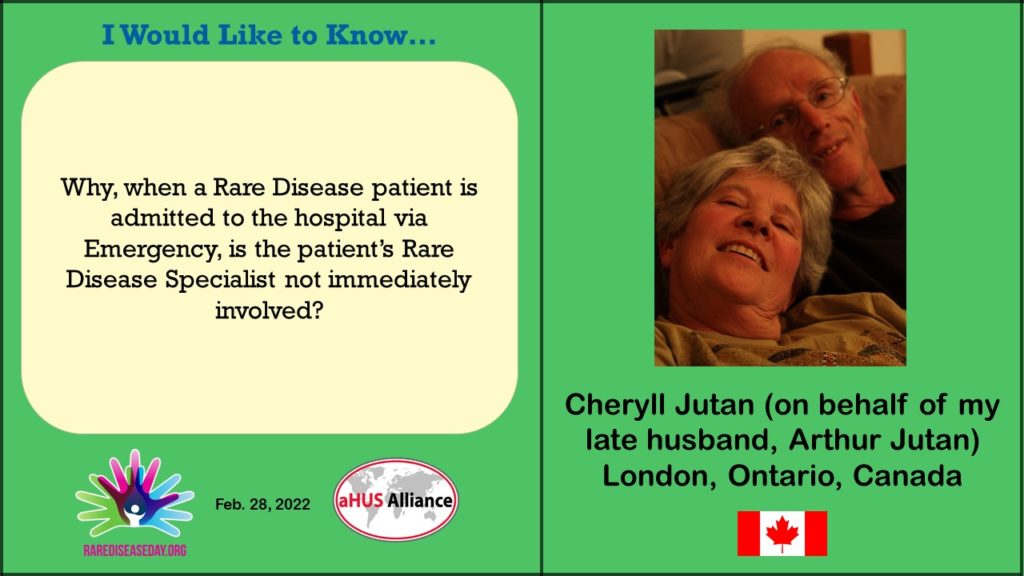The care pathway for aHUS patients has been looked at in detail in Global Action’s Diagnosis Process Study ( for reports published to date click HERE ).
None of the 227 aHUS patients in the study were diagnosed with aHUS by Primary Care or ER professionals, the best that could be hoped for is that patients are referred quickly to specialists, Cheryl.

Although acute kidney failure is the hallmark of aHUS it does not always manifest in all patients. So the specialist treatment pathway experience may vary, but there will be no significant differences in outcome between different specialisms seen.
Again the best of outcome for an aHUS would be that a TMA is identified and the cause of that TMA is suspected to be aHUS in 7 days or less. According to surveys of clinicians they reckon they can determine the cause of a 92% of TMAs in 7 days or less.
Only 48% of aHUS patients were identified by their clinicians in 7 days of less of presentation . Cheryl. This would mean that most aHUS patients may well be disproportionately in the 8% of TMAs not rapidly diagnosed or treated category.
In fact it takes more than 31 days for 30% of aHUS patients to be correctly diagnosed. The worst of health and the highest of treatment burden outcomes can then result. Most aHUS patients are misdiagnosed with another type of TMA.
So many aHUS patients are misdiagnosed as you say, Raven. Some of these diagnoses are revised quickly even within the 7 days for a rapid diagnosis , but most are not. A lot of aHUS patients will be told they are TTP patients for months , years , sometimes decades, until some chance event suggests the original diagnosis was wrong. These are medical mistakes by clinicians who thought they had picked the right cause of a TMA presenting to them. But they got it wrong.

There are numerous guidelines on how to make a decision about the cause of a TMA, Raven. Built into them, too often for aHUS patients, is the phrase that aHUS diagnosis is one of ”exclusion”. It’s what is left after excluding all other causes of TMA. A process that must not be allowed to take too long, but it does, sadly, for too many aHUS patients. .
But if the wrong TMA cause is chosen , usually TTP , then the diagnose process will not reach the exclusion stage to get a correct diagnosis of aHUS. For aHUS a “misdiagnosis of inclusion” makes thing worse for aHUS patients.
The aHUS patients diagnosed as TTP will be incorrectly treated and will not thrive on TTP treatment. Maybe needing a kidney transplant that would fail, or need eculizumab rescue therapy once it is realised too late that the patient had the wrong diagnosis.. Too late and their outcomes are poorer health and higher treatment burden.
Training is important, Raven, as are TMA guidelines which reflect new diagnostic opportunities and could make aHUS a diagnosis of inclusion, increasing decision accuracy and speeding things up.
Current specialists can update their knowledge and medical schools could to revise their education programmes. That will take time and some clinicians may never change , it would be difficult to admit they are wrong.
There are aHUS patients out there today who do not know they have been misdiagnosed. Some may have died without knowing or even knowing too late.
The final report on the Diagnosis Process is due to be published in June. It will have more to say about patients expectations from a quality care pathway for aHUS , Raven and Cheryl.
Article No. 513

